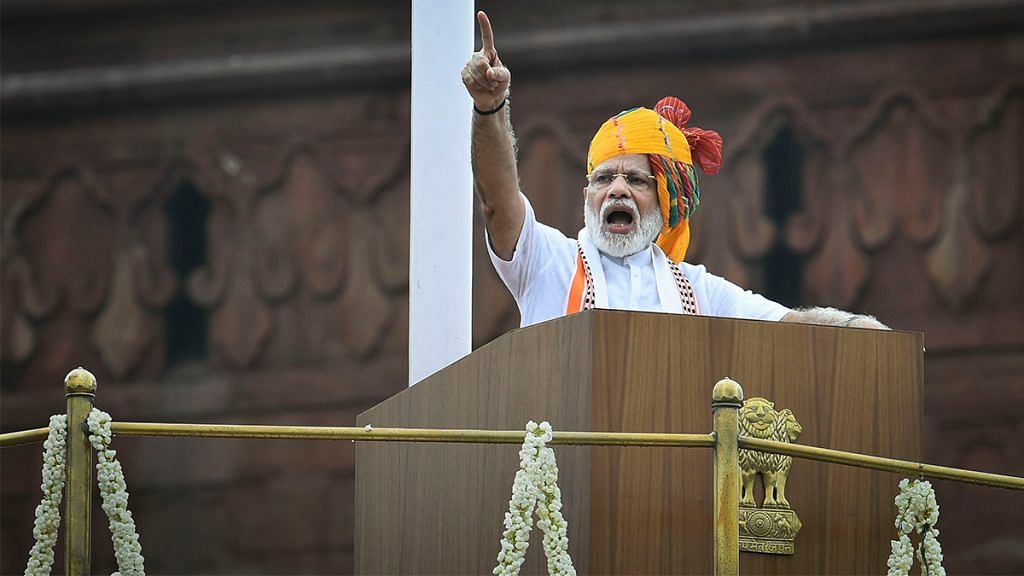There are two ways of misreading Jharkhand elections. The first mistake was made by the BJP before the election: the assumption that the 2019 Lok Sabha victory would automatically translate into a triumph in assembly elections. This led to hubris, loss of allies and loss of elections for the BJP. The second mistake is the one that the non-BJP parties are likely to make post the election results: the assumption that the BJP’s loss in assembly election will build up to the BJP’s eventual defeat in the next Lok Sabha election. This assumption leads to complacency, and can be fatal for the opposition.
It was natural for the BJP to make the assumption that it did after its spectacular success in the Lok Sabha elections, where it won 303 seats. After all, the BJP led in 63 out of 81 assembly constituencies in Jharkhand. In terms of vote share, it was head and shoulders ahead of any opposition party.
Also read: Modi lost Jharkhand because his priorities have changed – from vikas purush to Hindu saviour
Failure of the BJP
Previously a victory of this scale in the Lok Sabha election would have rendered the assembly election that followed within six months a foregone conclusion. This is exactly what happened after Narendra Modi’s first victory in 2014. But something has clearly changed. It began with the Odisha assembly elections held along with the parliamentary elections itself. While the BJP won eight out of 21 seats in the Lok Sabha, Naveen Patnaik’s Biju Janata Dal had a comfortable majority in the simultaneous assembly elections (113 out of 147 seats). But it looked like an aberration. Maharashtra and Haryana assembly elections established it as a trend. In both states, the BJP’s seats and votes plummeted between the Lok Sabha and Vidhan Sabha elections. The result of the Jharkhand election puts a seal of confirmation on this new pattern. In retrospect, one can see that the assembly elections held in Gujarat and Karnataka and later in Telangana, Rajasthan, Madhya Pradesh and Chhattisgarh also fit into the same pattern.
Although the BJP’s loss in terms of votes is not substantial when compared to the last assembly elections, but the drop between Lok Sabha and assembly elections is breathtaking. Clearly, not only did the Modi magic not work, attempts to distract the voters through remote national issues like Kashmir or Ram Janambhoomi or NRC-CAA failed as well. The BJP will have to come to terms with a harsh reality: whenever its state governments are put to test, they fare very badly. The BJP would need to think afresh about its incumbency in Uttar Pradesh, and in taking on formidable opponents in Delhi and West Bengal.
Also read: With Jharkhand, India is telling Modi it wants a ‘majboor sarkaar’, not ‘majboot sarkaar’
Failure of the opposition
The immediate reaction to the Jharkhand verdict indicated that the anti-BJP parties could fall for the opposite error. Many opposition leaders and commentators seemed to assume that this was the beginning of the end of the Modi regime. Many leaders claimed that the verdict was the people’s reaction to this government’s economic policies, its communal agenda or even the National Register of Citizens. Nothing could be further from the truth.
It is fanciful to assume that the voter sitting in a Palamu village was responding to the debate around the Citizenship (Amendment) Act. As of now, there is little reason to believe that PM Modi’s personal popularity or the acceptance of some of his controversial policies like Kashmir has suffered a serious setback. Such an assumption would be politically suicidal and lull the opposition into political complacency.
Also read: Hemant Soren could teach Congress a thing or two about fighting Narendra Modi
Split-ticket voting
Political scientists call it “ticket-splitting” and view this as a sign of voters’ sophistication. For the first two decades, Indian voters voted the same way in the Lok Sabha and the assembly elections, irrespective of the level of competition. In the next two decades, 1970s and 1980s, they voted in the assembly elections as if they were choosing their prime minister. The pattern reversed in the 1990s and 2000s – the voters cast their vote in the Lok Sabha election as if they were choosing their CM. Now, we seem to have finally arrived in an era where voters look at the specific level and their local choices before deciding who to vote for. In normal times this would be seen as an indication of the Indian voter coming of age.
But we live in unusual times. This game of electoral competition is being played out when the institutional edifice of our republic is being taken apart. In this context, any weakening of the regime should bring some relief. But this relief could be illusionary.
Faced with declining support at the state level, the Modi regime could use the “ticket-splitting” logic to concentrate on retaining support at the Centre. This is likely to be accompanied by greater concentration of powers for the central government and reduction of state governments to glorified municipalities. Given the rather week capacity and imagination of regional parties, including those in power, the regime could well succeed in continuous dismantling of the republic even while ceding political space at the state level. In sum: state battles are no substitute for taking on the Modi regime at the level of national politics.
The author is the national president of Swaraj India. Views are personal.
